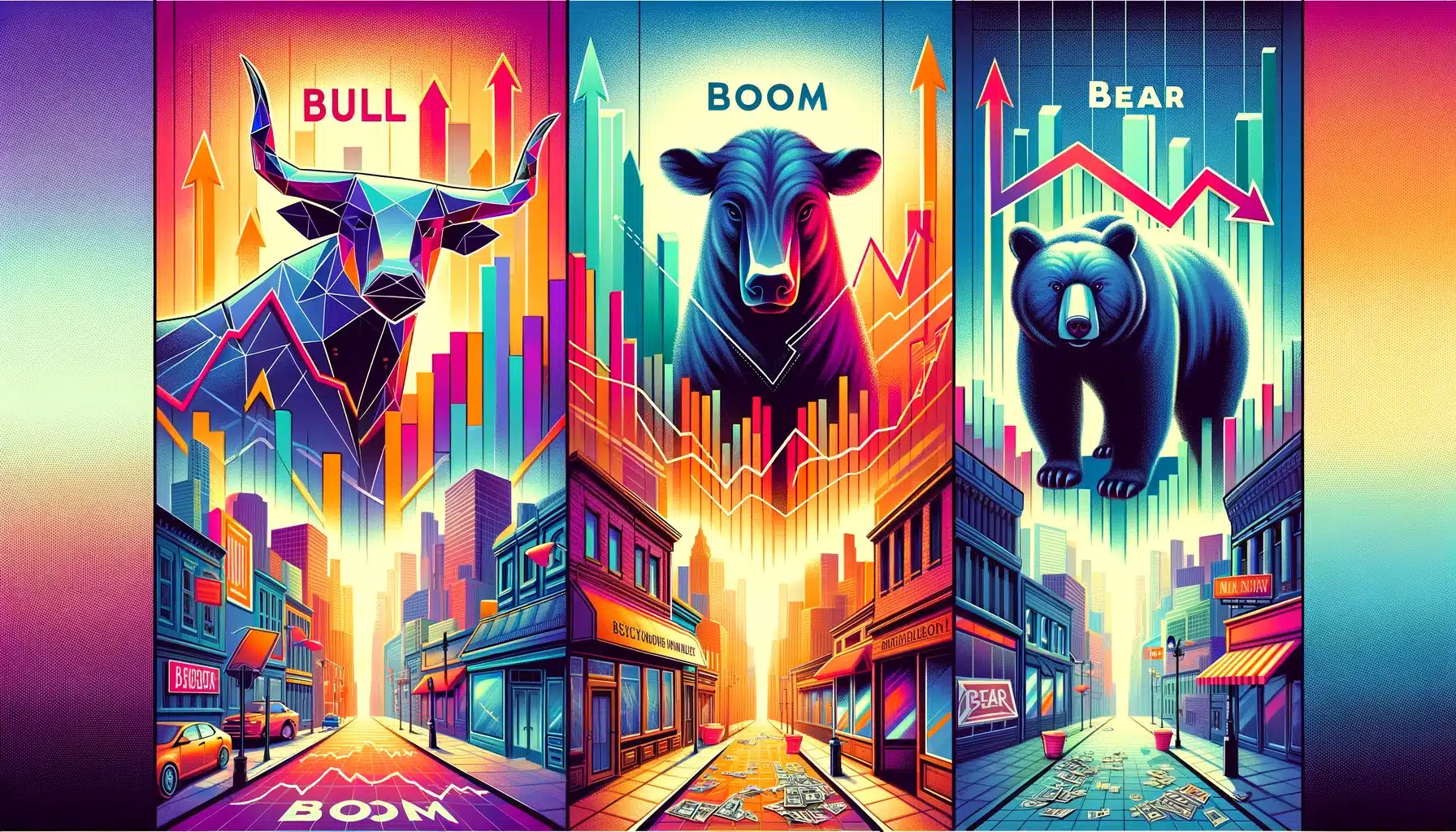Bull, Boom, Bear, Bust, explained

The terms “bull,” “boom,” “bear,” and “bust” are commonly used in economic and financial contexts to describe market conditions or trends.
- Bull/Bull Market: This term refers to a market condition where prices are rising or are expected to rise. The term “bull” is used because a bull attacks by thrusting its horns upward, symbolizing the upward movement of the market. Investors in a bull market are optimistic and expect the upward trend in prices to continue, leading to potential profits.
- Boom: A boom refers to a period of significant economic expansion, characterized by increased productivity, high demand, low unemployment, and rising asset prices. During a boom, consumer confidence is high, leading to increased spending and investment. Booms contribute to the overall growth of the economy but can also lead to inflation if demand outstrips supply.
- Bear/Bear Market: This term describes a market condition where prices are falling or are expected to fall. The term “bear” is used because a bear attacks by swiping its paws downward, symbolizing the downward movement of the market. Investors in a bear market are pessimistic, expecting prices to continue falling, which can lead to reduced investment and spending.
- Bust: A bust refers to a period of economic contraction that follows a boom. It is characterized by a significant decline in economic activity, with reduced demand, increased unemployment, falling asset prices, and often deflation. A bust can lead to a recession or depression, periods of prolonged economic downturn.
These terms help investors, economists, and analysts describe and discuss market dynamics and economic cycles, providing a shorthand for complex phenomena that affect economies and financial markets worldwide.
ChatGPT
Writer
ChatGPT is a large language model developed by OpenAI, based on the GPT-3.5 architecture. It was trained on a massive amount of text data, allowing it to generate human-like responses to a wide variety of prompts and questions. ChatGPT can understand and respond to natural language, making it a valuable tool for tasks such as language translation, content creation, and customer service. While ChatGPT is not a sentient being and does not possess consciousness, its sophisticated algorithms allow it to generate text that is often indistinguishable from that of a human.
